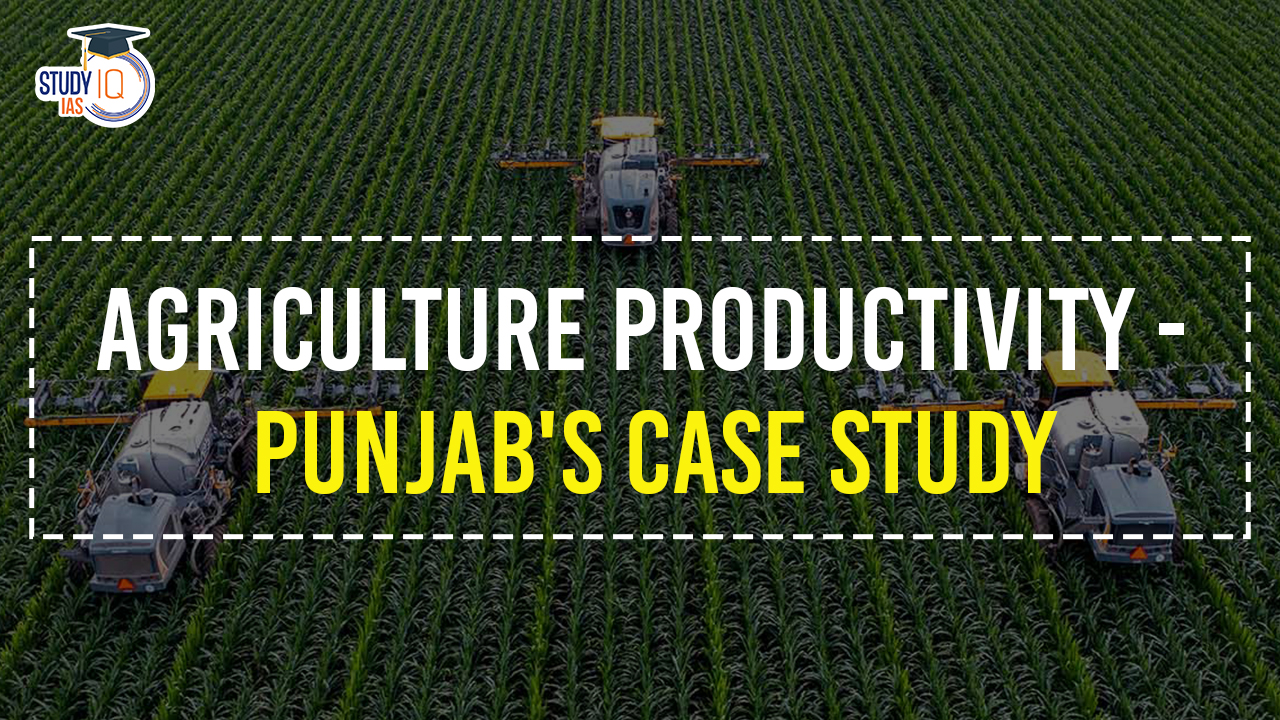Table of Contents
Context: Despite high productivity of rice and wheat, Punjab ranks low (13th) in agri-GDP per hectare (ha) compared to other states like Andhra Pradesh (AP), West Bengal (WB), and Tamil Nadu (TN).
Why the Disparity?
- Focus on Staples: Punjab relies heavily on rice and wheat, crops with lower market value.
- MSP Dependence: The Minimum Support Price (MSP) system guarantees a fixed price for these crops, but discourages diversification.
- Subsidies: Free power and subsidised fertilizers further incentivize rice-wheat cultivation, but don’t promote high-value crops.
- Resource Depletion: Rice-wheat cultivation heavily utilises groundwater, leading to over-exploitation.
| Measuring Agri-Value Creation |
|
Top Performers
- Using NSA: Andhra Pradesh (Rs 6.43 lakh/ha), West Bengal (Rs 5.19 lakh/ha), Tamil Nadu (Rs 5.14 lakh/ha)
- Using GCA: Bihar (Rs 2.18 lakh/ha), Odisha (Rs 2.57 lakh/ha), Assam (Rs 2.34 lakh/ha)
We’re now on WhatsApp. Click to Join
Lessons from Leading States
- Andhra Pradesh: Focuses on high-value inland fisheries (especially shrimp) for increased profitability.
- Tamil Nadu: Leads in fruit production (mangoes, bananas) and uses innovative practices like Ultra High-Density Plantation (UHDP) for higher yields and water/fertilizer savings.
- West Bengal: Transitions from a production-oriented to a market-driven system, focusing on vegetables like brinjal, cabbage, cauliflower, and potato. Achieves high cropping intensity (199%).
Recommendations for Punjab and Haryana
- Shift from Rice Cultivation: Move at least 1.5 million hectares (out of 4.5 million) to pulses, oilseeds, maize, fruits, and vegetables.
- Create Crop-Neutral Incentives: Offer financial rewards (around Rs 25,000/ha) to encourage farmers to switch from paddy to other crops.
- Develop Sustainable Practices: Implement a 50:50 central-state-funded program promoting sustainable cropping patterns.
- Diversify into High-Value Agriculture: Learn from states like Andhra Pradesh (inland fisheries) and Tamil Nadu (fruits).
- Embrace Market-Driven Approach: Identify Punjab’s own Agri-Export Zones (AEZs) for horticulture, similar to West Bengal’s model for vegetables.
- Capitalise on Existing Strengths: Leverage Punjab’s strong dairy sector by venturing into value-added processing (cheese, chocolates).


 Securities Markets Code Bill 2025: Towar...
Securities Markets Code Bill 2025: Towar...
 Weakly Interacting Massive Particles (WI...
Weakly Interacting Massive Particles (WI...
 India–Oman Trade Deal: CEPA Signed to ...
India–Oman Trade Deal: CEPA Signed to ...

























